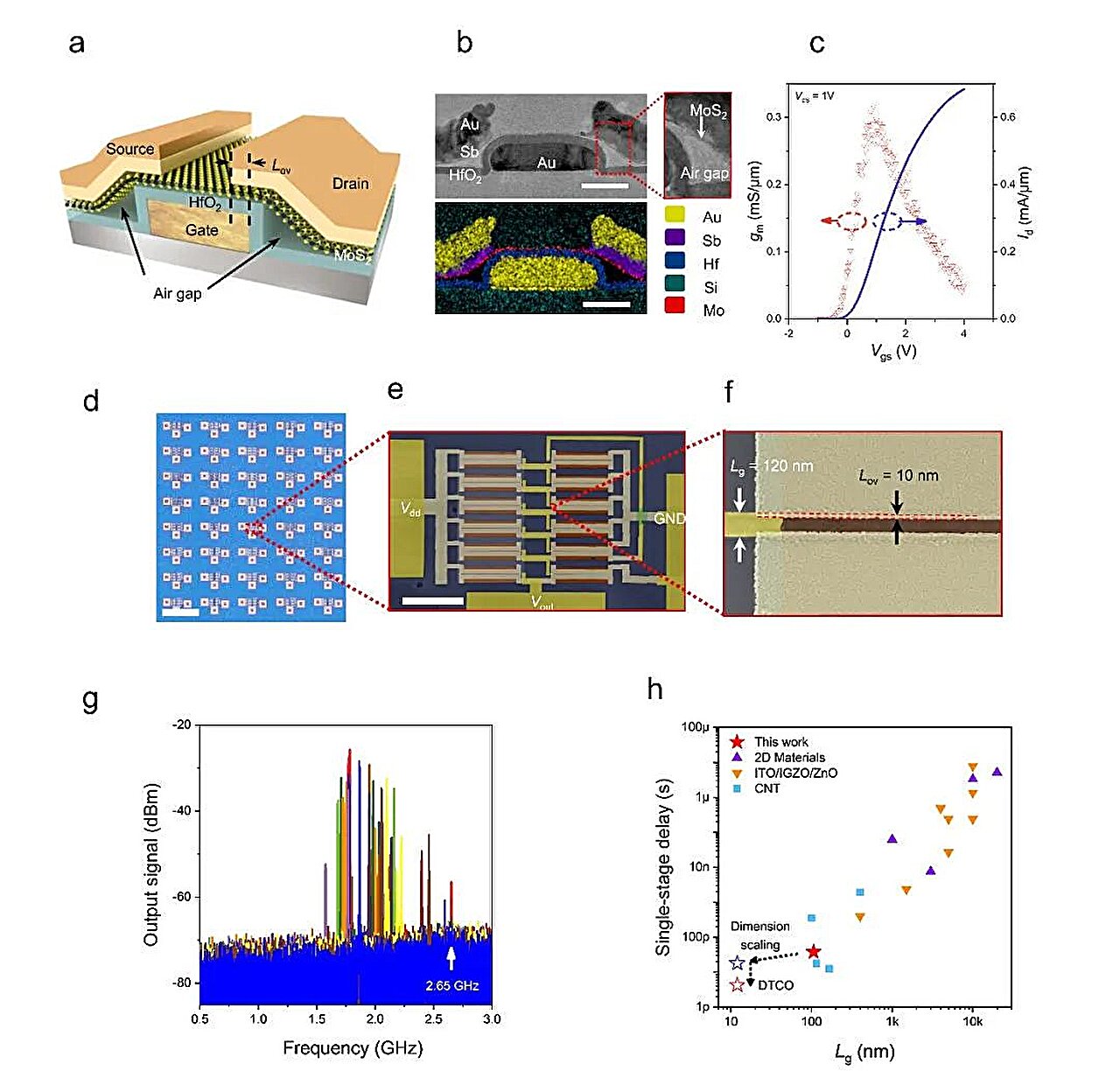
Transistors are crucial electronic components that regulate, amplify and control the flow of current inside most existing devices. In recent years, electronics engineers have been trying to identify materials and design strategies that could help to further improve the performance of transistors, while also reducing their size.
Two-dimensional (2D) transition metal dichalcogenides have some advantageous properties that could help to enhance the capabilities of transistors. While past studies have demonstrated the potential of these materials in individual transistors, their use for developing entire integrated circuits (ICs) that operate at high frequencies has proved challenging.
Researchers at Nanjing University in China recently created new ICs that can operate at GHz frequencies, based on the 2D semiconducting material monolayer molybdenum disulfide (MoS2). Their devices, presented in a Nature Electronics paper, rely on MoS2-based field-effect transistors (FETs).
“Since the report of the first MoS2 transistor in 2012, [much progress] have been achieved,” Hao Qiu, co-author of the paper, told Tech Xplore. “However, most of [this progress is] on the device level. On the circuit level, the operation frequency was limited to 13 MHz, which is far lower than the CMOS technology as well as the carbon nanotube technology.”
The primary objective of the recent research by Qiu and his colleagues was to realize a fast 2D semiconductor-based IC that reaches beyond GHz frequencies. To do this, the team first fabricated a ring oscillator (RO), a tunable electronic circuit that produces signals in a specific frequency, utilizing MoS2 -based transistors.
“The RO was constructed by cascading five inverters in a ring, and the output was read through a buffer,” Qiu explained. “Each inverter was constructed from an enhancement (E)-mode FET as the drive and a depletion (D)-mode FET with the gate and source terminals connected as the load. The as-fabricated FETs are in the E mode due to little unintentional doping during fabrication. To obtain D-mode FETs, we deposited sub-stoichiometric AlOx on MoS2 by atomic layer deposition (ALD) as the n-doping layer.”
The researchers evaluated their IC in a series of tests and found that it could operate at frequencies of up to 2.65 GHz. They also run a series of computer simulations that demonstrated the scalability of their design and its potential for meeting targets set within the industry for 2031.
“We adopted the design-technology co-optimization (DTCO) strategy and demonstrated two-dimensional semiconductor integrated circuits that can operate in the GHz regime,” Qiu said. “Our work highlights the critical role of DTCO in advancing 2D semiconductor circuit-level performance.”
The new design introduced by this team of researchers could ultimately contribute to the future improvement and scaling of ICs. In their next studies, Qiu and his colleagues plan to continue working on their devices to further boost their performance, facilitate their large-scale fabrication and enable their integration with existing electronics.
“In addition to increasing the integration level, we are on the way to further optimizing performance, power, and area of the 2D semiconductor integrated circuit,” Qiu added. https://techxplore.com/news/2023-11-circuits-based-2d-semiconductor-ghz.html









Recent Comments